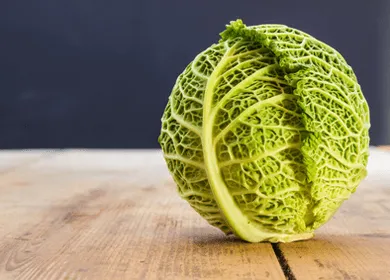
- Share on Facebook80
- Share on Pinterest
- Share on Twitter
Vegetables, from deep green leaves to round, pungent bulbs, are at the core of a plant-powered diet. That’s because they are full of powerful nutrients and bioactive compounds that promote optimal health, including:
 Healthy Carbs – Although the carbohydrate levels are usually low in most vegetables, a few contain higher levels. But these carbs are typically slow-burning, so they can fuel your energy levels without rapid blood sugar highs and lows.
Healthy Carbs – Although the carbohydrate levels are usually low in most vegetables, a few contain higher levels. But these carbs are typically slow-burning, so they can fuel your energy levels without rapid blood sugar highs and lows.
Fiber – The vegetable family includes all types of fiber, including insoluble and soluble fiber, oligosaccharides, resistant starches, lignins, and inulin for a variety of heart and digestive health benefits and improved blood sugar levels.
Protein – Some veggies even contain significant amounts of protein—up to 4 grams per ½ cup serving.
Vitamins Galore – Almost every essential vitamin can be traced back to the vegetable family, including folate, thiamin, riboflavin, niacin, pantothenic acid, and vitamins A, B6, C, and K.
Mineral Bounty – Veggies contain supplies of many essential minerals, such as iron, potassium, manganese, magnesium, phosphorus, calcium, zinc, copper, and selenium.
Phytochemicals. Vegetables are extremely high in a cornucopia of phytochemicals that provide antioxidant and anti-inflammatory properties as well as documented health benefits.
My Top 15 Tips to Push Your Veggies!
There are so many reasons to pump up the volume on veggies, but so few people are taking full advantage of them. Only 26 percent of adults eat a full serving of vegetables three or more times a day. Here are my favorite tips for boosting those precious servings of vegetables to at least six servings a day.
1. Mix onions, mushrooms, and bell peppers into a morning veggie burrito, omelet or breakfast pita.
2.Try sliced tomatoes or a baked tomato half at breakfast—it’s a favorite in the United Kingdom.
3. Pile lettuce, spinach, sprouts, tomatoes, cucumbers, avocado, peppers, and/or onions into your pita or wrap.
4. At least weekly, put vegetable stir-fry on the menu. Sauté cabbage, broccoli, celery, snow peas, bell peppers, carrots, onions, and/or mushrooms with nuts and your favorite spices and serve with brown rice.
5. Make your own vegetarian pizza packed with spinach, zucchini, onions, and mushrooms (or try my recipe for a Hand-crafted Veggie Pizza).
6. Have a veggie burger once a week, topped with lettuce, tomato, onions, pickles, and avocado.
7. Make a hearty chili with beans, fresh or canned tomatoes, onions, and peppers.
8. Double up on cooked vegetable servings at dinner time.
9. Add chopped vegetables, such as mushrooms, green peas, broccoli, carrots, summer squash, green beans, onions, and red peppers, to broth-based soups.
10. Include a garden salad or broth-based vegetable soup at every dinner.
11. Mix vegetables into your favorite casseroles—try peas or squash in your macaroni and cheese or broccoli and kale in your lasagna.
12. Use leftover chopped, cooked vegetables (broccoli, carrots, mushrooms, bell peppers, green peas) in soup, stew, or a casserole the next day.
13. Use low-sodium tomato juice as a base for soups.
14. Make a big pot of vegetable soup and freeze in individual containers for a quick lunch.
15. Don’t just limit salad to a plate of pale greens; try a variety of leaves, from red oak to arugula, and top them with a rainbow of veggies, including cucumbers, carrots, squash, broccoli, cauliflower, peas, corn, peppers, tomatoes, and jicama.
– Sharon Palmer R.D.
As a registered dietitian with 16 years of health care experience, she focuses on writing features covering health, wellness, nutrition, cooking, wine, restaurant reviews, and entertainment. Over 750 of Sharon’s features have been published in a variety of publications. Her recent book The Plant-Powered Diet: The Lifelong Eating Plan for Achieving Optimal Health, Beginning Today can be ordered here.
- Share on Facebook80
- Share on Pinterest
- Share on Twitter

